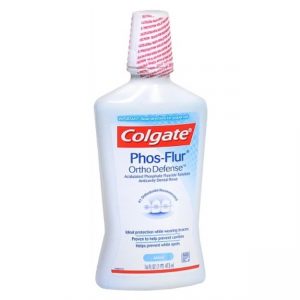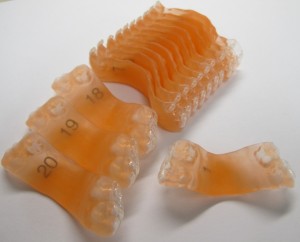Starting January 16th we will be changing our rewards program. As always, we want to thank you for sending your family and friends to our office. Please see below how the program has changed. We are looking forward to implementing this program and giving out some awesome prizes! When you refer any non-family member to our office (and they start active treatment*) you will be rewarded two ways: A $25 gift card to a retailer of your choice. A chance to enter the grand prize drawing. The grand prize is a Fuji Film Instax 70 Camera. There will be two winners, one per office location. *Active treatment is considered traditional braces or Invisalign.
dental
Are Dentists and Orthodontists the Same?

When it comes to getting your teeth straightened, you need to know the difference between dentists and orthodontists. It’s important to know that all orthodontists are dentists, but not all dentists are orthodontists. This is because the dentistry profession, like medicine, is divided into primary care dentists and specialists. All dentists attend college, usually for four years, then attend another four years of dental school. In dental school, they are taught the basics of several procedures, and learn to clean teeth, diagnose cavities and oral diseases, and do crowns, bridges, root canals, and silver and tooth-colored fillings. They also learn to perform a number of surgical procedures, make complete and partial removable dentures, and much more. Once they graduate from dental school and pass their clinical exams, they earn their licenses to practice as dentists. At this time, these dentists are called general dentists, general practitioners, GPs, or primary care…
Help Prevent White Spot Lesions on your Child’s Teeth!

Phos-Flur® Rinse is specially formulated for orthodontic patients to keep the teeth healthy and help prevent white spots! The first evidence of tooth decay is known as a white spot lesion in which the tooth’s enamel takes on an opaquee color in the area where a cavity is beginning to form. Sodium Fluoride, the active ingredient in Phos-Flur® Rinse, is a mineral that works by making the teeth stronger and more resistant to cavities caused by acid and bacteria. Safe, great-tasting and easy to use, Phos-Flur® Rinse provides clinically proven fluoride protection. Adults and children 6 years of age and older should rinse once a day after brushing teeth with toothpaste. Vigorously swish 2 teaspoonfuls of rinse between the teeth for one minute and then spit it out. No eating or drinking for 30 minutes after rinsing! If your family dentist has prescribed you or your child a different fluoride product, please be sure to…
Does Your Child Breath Through Their Mouth or Their Nose?

Normal, well-developed airways allow normal breathing through the nose, with the mouth closed. Nasal breathing is important because it is now known to be vital to good health. Research has shown that air breathed through the nose is quite different to the body than air breathed through the mouth. The benefits of nasal breathing begin within hours of birth when nasal nitric oxide gas can first be detected. Nitric oxide is a potent gas and a key component of human health. Nitric oxide is produced in the nasal sinuses, secreted into the nasal passages and inhaled through the nose. It is well known to prevent bacterial growth, and in the lungs, nitric oxide improves the ability to absorb oxygen. Nitric oxide is a strong vasodilator and brain transmitter. Furthermore, nitric oxide increases oxygen transport throughout the body and is vital to all body organs. A good airway and normal nasal…
The importance of Panoramic X-Rays

In addition to our March 2015 blog, which explains the diagnostic merits of the panoramic x-ray, we have added another great benefit to having your child receive a panoramic x-ray by the age of 8. It is important for the orthodontist to have the panoramic x-ray in order to ensure normal development of the roots of a child’s permanent back teeth – all of which are forming by age 8. Abnormal patterns of root development can cause teeth to become impacted. An impacted tooth remains stuck in gum tissue or bone and does not emerge normally. We believe that most impactions can be prevented if we have the panoramic x-ray by age 8 and are able to identify these abnormal patterns of root development. Canines (AKA “eye” or “fang” teeth) in particular are prone to impaction, but tend to respond very well when their emergence space is enhanced at an…
